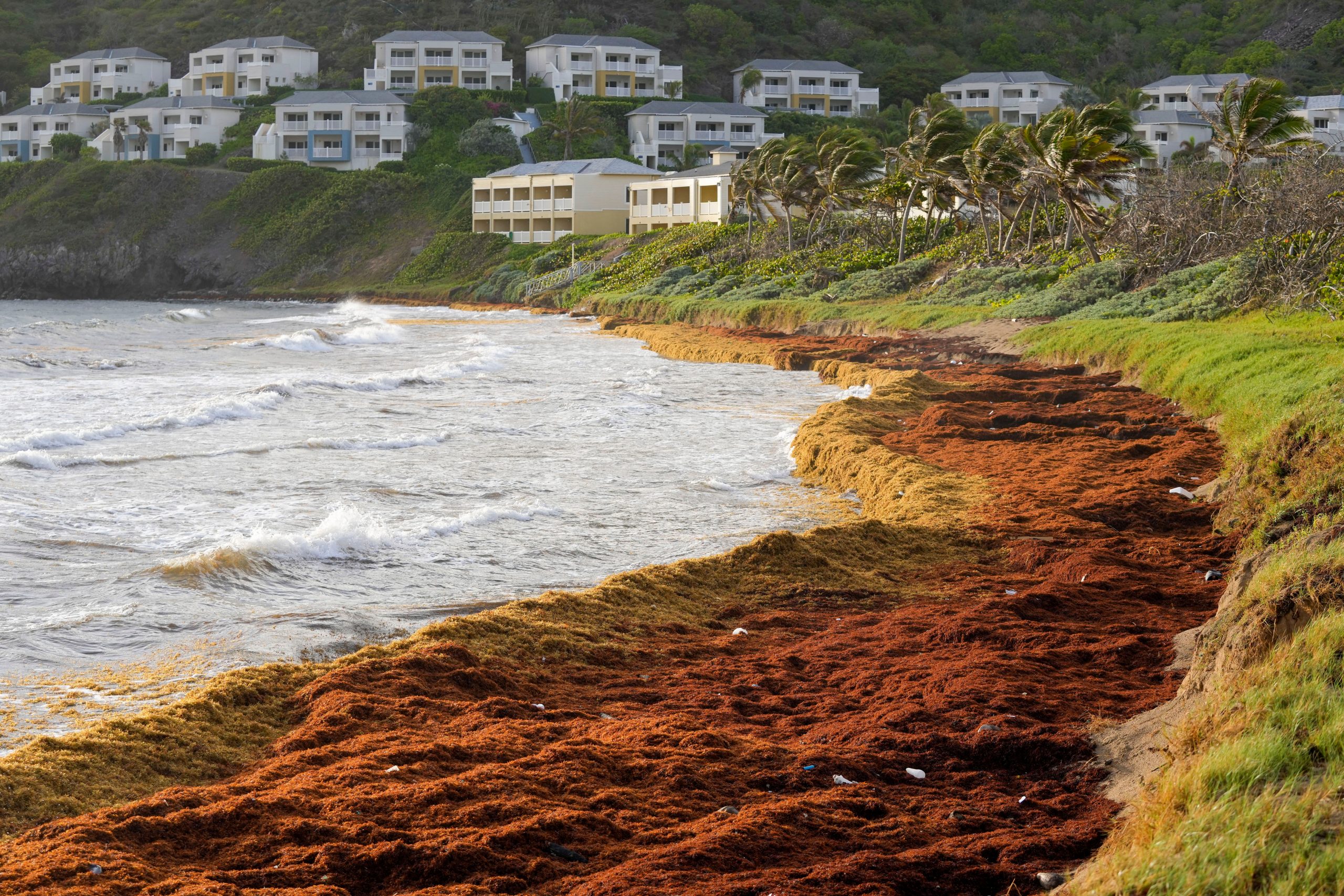Near-record amounts of seaweed are smothering Caribbean coasts from Puerto Rico to Barbados, killing fish and other wildlife, choking tourism and releasing stinky, noxious gases.
More than 24 million tons of sargassum blanketed the Atlantic in June, shattering the all-time record, set in 2018, by 20%, according to the University of South Florida’s Optical Oceanography Lab. And unusually large amounts of the brown algae have drifted into the Caribbean Sea.
Also read: 5 ways you can be eco-friendly toward nature
A raggedy carpet of vegetation recently surrounding an uninhabited island near the French Caribbean territory of St. Martin is popular with tourists, forcing officials to suspend ferry service and cancel kayaking, paddle boarding and snorkelling tours. The normally translucent turquoise waters around Pinel Island turned into a prickly yellowish-brown slush.
Oswen Corbel, owner of Caribbean Paddling, said he had to close his St. Martin business on July 22 and doesn’t expect to reopen until late October. He estimated he has lost at least $10,000.
Also read: Why Mount Everest’s base camp in Nepal might be relocated
“Maybe I should give up. … Sometimes I think I should go into the mountains and herd sheep, but this is what I know to do,” he said. “What’s next? We had Hurricane Irma, we had Covid, we had the sargassum, and now I’m pretty scared of global warming.”
Scientists say more research is needed to determine why sargassum levels in the region are so high, but the United Nations’ Caribbean Environment Program said possible factors include a rise in water temperatures as a result of climate change, and nitrogen-laden fertiliser and sewage that nourish the algae.
“This year has been the worst year on record,” said Lisa Krimsky, a university researcher with Florida Sea Grant, a program aimed at protecting the coast. “It is absolutely devastating for the region.”
Also read: World Oceans Day: Here’s all you need to know about history and significance
She said large masses of seaweed have a severe environmental impact, with the decaying algae altering water temperatures and the pH balance and leading to declines in seagrass, coral and sponges.
“They’re essentially being smothered out,” Krimsky said.
The “golden tide” also has hit humans hard.
The concentration of algae is so heavy in parts of the eastern Caribbean that the French island of Guadeloupe issued a health alert in late July. It warned some communities about high levels of hydrogen sulphide gas emanating from the huge rotting clumps of seaweed. The gas, which smells like rotten eggs, which can affect people with breathing problems such as asthma.
Also read: In worsening environmental conditions, sustainable living is key
The Biden administration declared a federal emergency after the US Virgin Islands warned last month of unusually high amounts of sargassum clogging machinery at a desalination plant near St. Croix that is struggling to produce water and meet demand amid a drought.
In addition, the US Virgin Islands’ electricity generating station relies on ultra-pure water from the desalination plant to reduce emissions. The loss of such water would force the government to use a type of diesel fuel that is more expensive and in limited supply, officials said.
Chuanmin Hu, an oceanography professor at the University of South Florida who helps produce the seaweed reports, said sargassum levels for the eastern Caribbean were at a near-record high this year, second only to those reported in July 2018. Levels in the northern Caribbean are at their third-highest level, he said.
Also read: Here’s how you can recognise and treat heat stroke
Experts first noted large amounts of sargassum in the Caribbean Sea in 2011, and the problem has occurred practically every year since then.
“We don’t know if this is a new normal,” Krimsky lamented.
Sargassum in moderation helps purify water and absorb carbon dioxide and is a key part of the habitat for fish, turtles, shrimp, crabs and other creatures. It is also used in fertiliser, food, biofuel, construction materials and medicinal products.
But it is bad for tourism and the environment when too much accumulates just offshore or on beaches.







